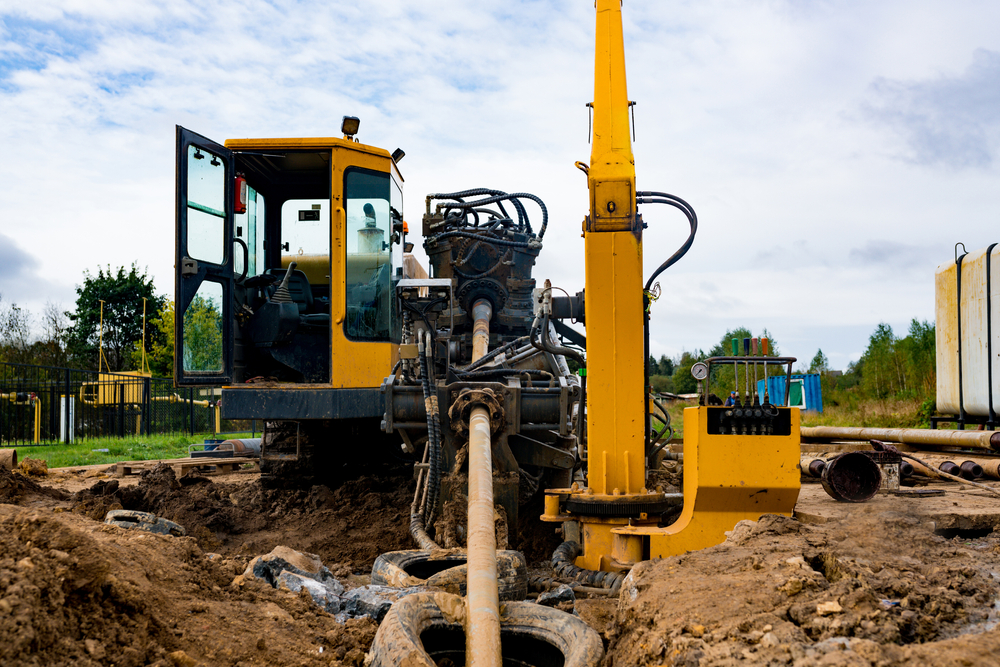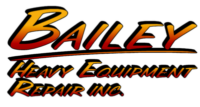Line Boring: A Crucial Maintenance Step for Heavy Equipment

When it comes to maintaining the efficiency and longevity of heavy machinery, few maintenance processes are as vital as line boring. Whether you are managing a fleet of excavators, bulldozers, or cranes, understanding the importance of line boring for heavy equipment can significantly enhance operational reliability and reduce costly downtime. This blog will explore the ins and outs of line boring, its applications in heavy equipment maintenance, and how it benefits construction equipment specifically.
What is Line Boring?
Line boring is a machining process used to repair and restore the cylindrical bores that house rotating components in heavy equipment. Over time, these bores can become misaligned or worn due to heavy use, impacting the machine’s efficiency and safety. Line boring involves using specialized tools to precisely restore these bores to their original specifications.
This process is essential for maintaining the structural integrity of heavy machinery and ensuring optimal performance. It’s a cornerstone of heavy equipment maintenance, playing a critical role in the lifecycle of construction and industrial machinery.
Why Line Boring is Essential for Heavy Equipment
Heavy equipment operates under extreme conditions, subjecting its components to significant wear and tear. Misaligned or worn bores can lead to several issues, including:
- Reduced Efficiency: Misalignment causes friction and resistance, reducing the performance of the machinery.
- Increased Wear on Components: Poorly aligned bores can cause uneven stress on parts, accelerating their deterioration.
- Safety Hazards: Equipment failure due to worn components can result in accidents, posing a serious risk to operators and surrounding personnel.
By addressing these issues through line boring, operators can restore machinery to peak operating conditions and extend its service life.
Common Applications of Line Boring in Heavy Equipment Maintenance
Line boring is a versatile maintenance process applicable to various types of heavy equipment, including:
Excavators
Excavators are crucial in construction, mining, and demolition projects. The bores in their arms, booms, and buckets are prone to wear due to constant movement and stress. Line boring for construction equipment like excavators ensures these critical components remain aligned, enabling smooth operation.
Bulldozers
Bulldozers handle heavy-duty tasks like pushing massive quantities of soil and debris. Misaligned bores in their blades or undercarriages can compromise performance. Regular line boring helps maintain the precision necessary for these demanding tasks.
Cranes
In cranes, misalignment in bores can cause issues with stability and rotation, directly affecting load handling. Line boring ensures these machines can operate safely and efficiently.
Loaders and Dump Trucks
The constant loading and unloading stresses components such as the hinge pins and pivot points, making them prime candidates for line boring. Maintaining these parts prevents operational disruptions and enhances productivity.
The Line Boring Process: Step by Step
Understanding the line boring process helps to appreciate its precision and significance in heavy equipment maintenance. Here is a step-by-step overview:
1. Inspection and Assessment
The first step is to inspect the equipment and assess the extent of wear or misalignment. This phase helps identify the exact locations requiring repair and ensures that no underlying issues are overlooked.
2. Setup and Alignment
Technicians set up the line boring machine, aligning it precisely with the bore’s original specifications. This step is critical to ensure accuracy and achieve the desired results.
3. Machining
Using specialized cutting tools, the technician carefully machines the bore to restore its dimensions. This process involves removing any irregularities and achieving a smooth, perfectly aligned surface.
4. Finishing and Reassembly
Once the machining is complete, the bore is checked for accuracy and finished to meet precise tolerances. The equipment is then reassembled, and final inspections are performed to ensure functionality.
Benefits of Line Boring for Heavy Equipment
Line boring is more than just a repair method; it’s a preventive maintenance strategy that offers numerous benefits:
Cost Savings
Replacing large components or entire machines is expensive. Line boring allows operators to repair worn parts rather than replacing them, saving substantial costs.
Extended Equipment Lifespan
By restoring precision and alignment, line boring reduces unnecessary wear on components, extending the overall lifespan of the machinery.
Enhanced Performance
Precision alignment ensures the equipment operates at peak efficiency, reducing energy consumption and improving output.
Minimized Downtime
Quick and efficient line boring services minimize downtime, keeping projects on schedule and avoiding costly delays.
Improved Safety
Properly maintained equipment is safer to operate. Line boring eliminates risks associated with misaligned or worn components, protecting operators and worksite personnel.
Choosing the Right Line Boring Service
Selecting a professional line boring service provider is crucial to achieving optimal results. Here are some factors to consider:
Experience and Expertise
Look for providers with extensive experience in line boring for construction equipment and other heavy machinery. Skilled technicians ensure precision and high-quality results.
Equipment and Technology
Modern line boring machines and tools enhance accuracy and efficiency. Choose a service provider that uses state-of-the-art equipment.
Customization
Every piece of heavy equipment has unique requirements. A good line boring service should offer customized solutions tailored to specific needs.
Reputation
Research customer reviews and testimonials to gauge the reliability and quality of the service provider. Positive feedback is a strong indicator of trustworthiness.
On-Site Services
Many line boring providers offer on-site services, eliminating the need to transport heavy equipment to a repair facility. This option can save time and reduce logistical challenges.
Preventive Maintenance: The Role of Line Boring
Integrating line boring into a preventive maintenance schedule can significantly improve equipment reliability. Regular inspections and timely repairs prevent minor issues from escalating into major problems. By addressing bore wear and misalignment early, operators can ensure consistent performance and avoid costly breakdowns.
Key Steps for Preventive Maintenance
- Routine Inspections: Regularly check critical components for signs of wear.
- Documentation: Maintain detailed records of inspections, repairs, and maintenance schedules.
- Collaborate with Experts: Work with skilled technicians to perform line boring and other essential maintenance tasks.
The Future of Line Boring in Heavy Equipment Maintenance
As technology advances, the tools and techniques used in line boring continue to evolve. Innovations such as computer-aided alignment systems and portable CNC machines are enhancing the precision and efficiency of this process. These advancements promise even better outcomes for line boring for heavy equipment, reducing costs and improving performance across industries.
Moreover, the growing emphasis on sustainability in construction and industrial sectors highlights the importance of maintenance practices like line boring. By extending the life of machinery, this process supports environmentally friendly operations, reducing waste and conserving resources.
Final Thoughts
Line boring is an indispensable aspect of heavy equipment maintenance, addressing the critical need for precision and alignment in machinery components. Whether it’s ensuring the smooth operation of an excavator or restoring the efficiency of a bulldozer, this process is a game-changer for operators and businesses alike.
For those managing fleets of construction equipment, prioritizing line boring not only reduces downtime and costs but also enhances safety and performance. By choosing skilled professionals and incorporating this service into a comprehensive maintenance strategy, you can maximize the value of your heavy equipment and keep your projects running smoothly.
Understanding the importance of line boring for construction equipment ensures you stay ahead in maintaining operational efficiency. Don’t wait for a breakdown; invest in proactive maintenance and secure the longevity of your machinery today.
